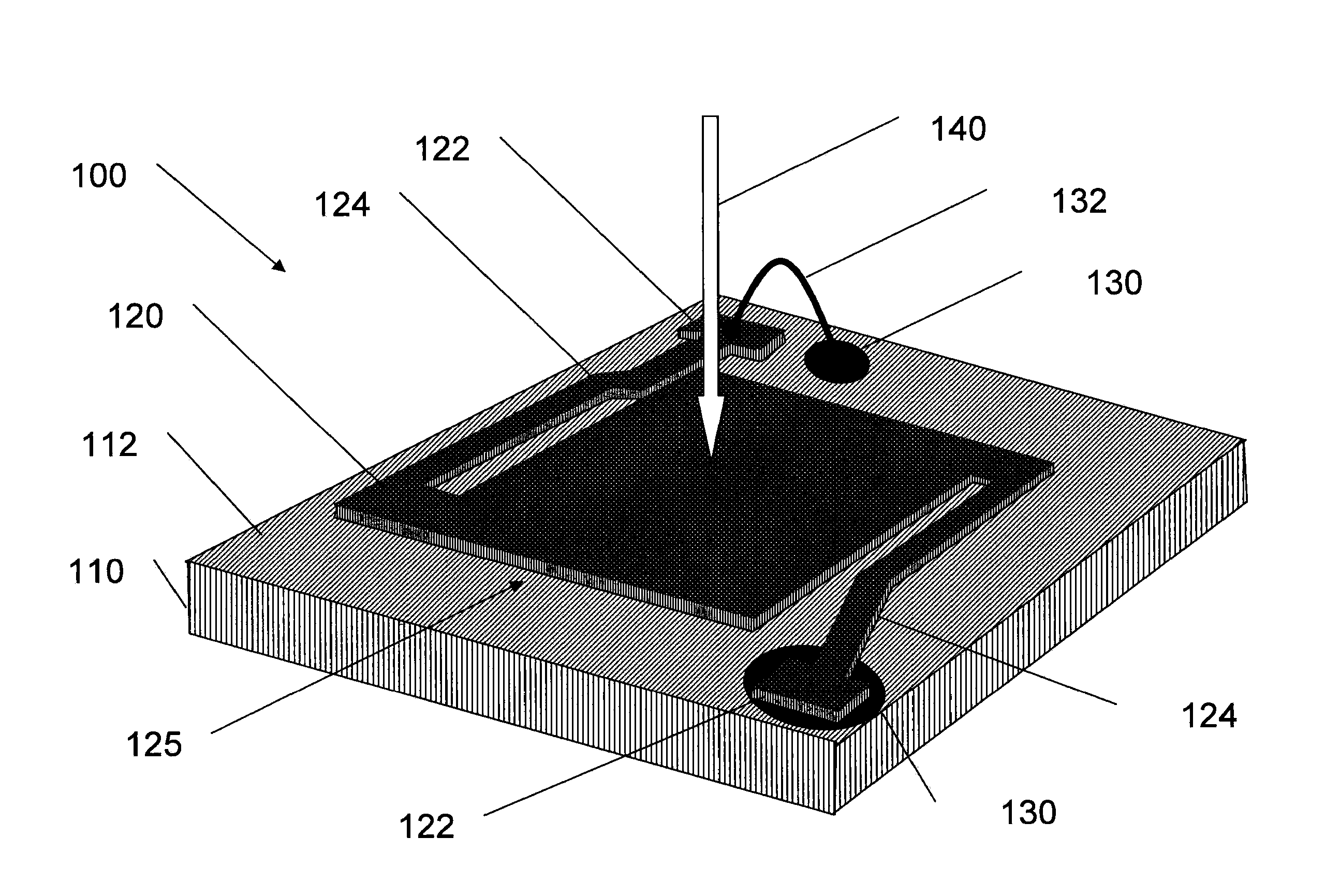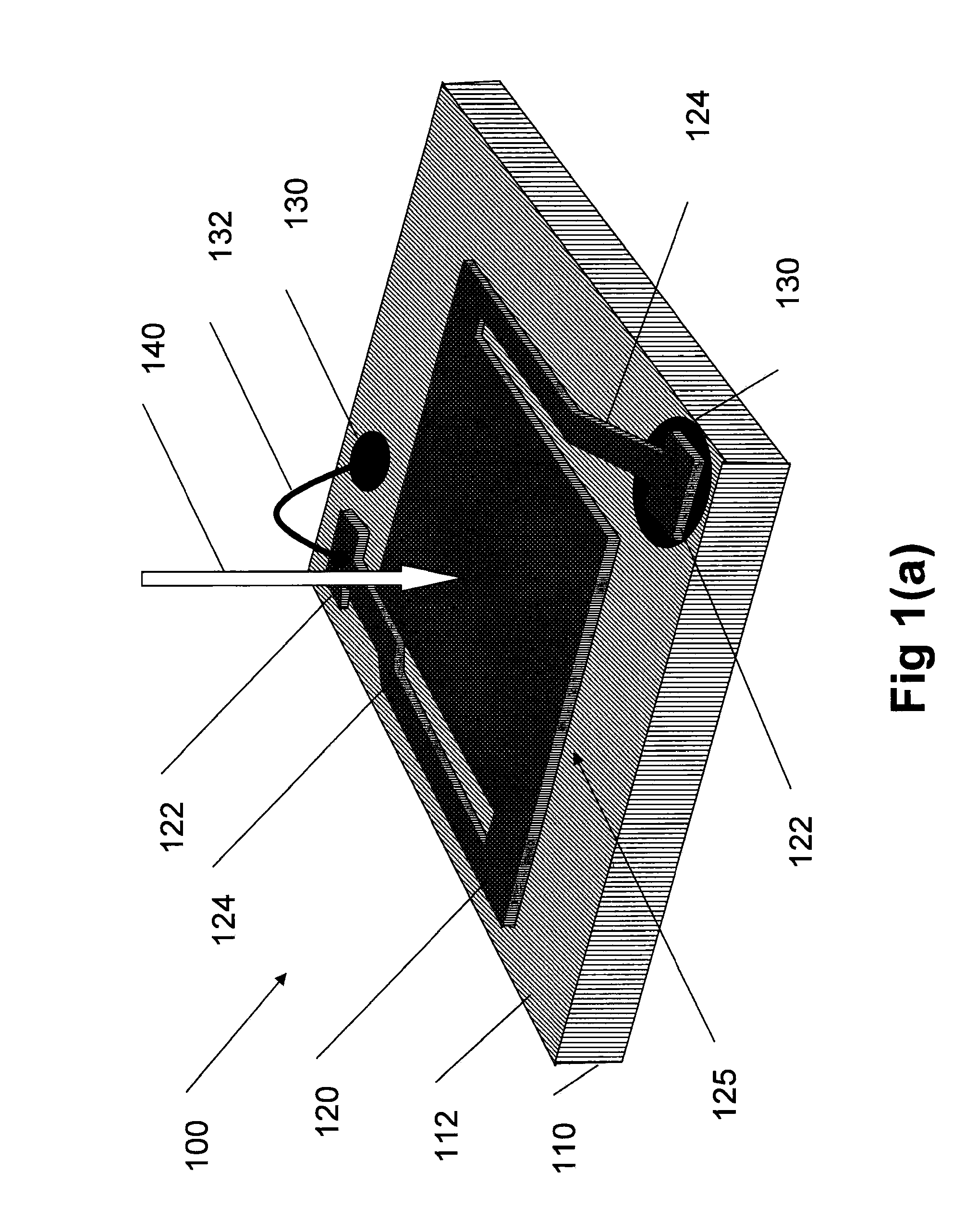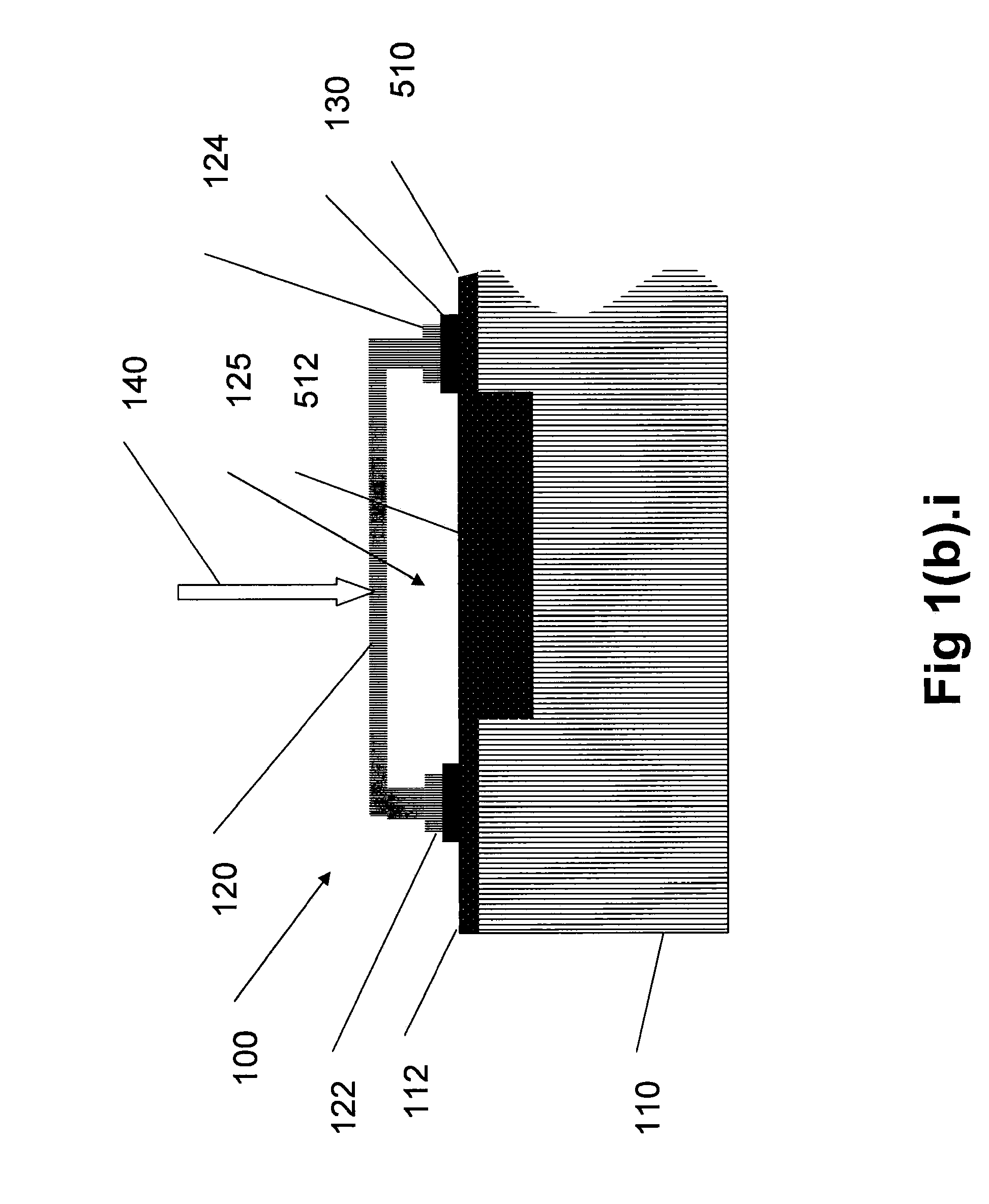Cavity Plasmon Resonance Biosensing Device, Method And System
- Summary
- Abstract
- Description
- Claims
- Application Information
AI Technical Summary
Benefits of technology
Problems solved by technology
Method used
Image
Examples
Embodiment Construction
configuration according to an embodiment of the current invention.
[0068]FIG. 2 schematically depicts the optimal absorption paths for various total absorption cases and intersection points with some material dispersion curves.
[0069]FIG. 3(a) schematically depicts the power absorption efficiency in the vicinity of various lossy resonances showing the efficiency η versus excitation wavelength λ=c / f.
[0070]FIG. 3(b) schematically depicts the power absorption efficiency in the vicinity of various lossy resonances showing the efficiency η versus angle of incidence θ1.
[0071]FIG. 4. schematically depicts the normalized LRM field distributions Eq / Ei (q=2,3) versus normalized location z / d.
[0072]FIG. 5. schematically depicts the effect of analyte losses on the Fabry-Perot sensing configuration showing the difference between water, for which the losses were completely neglected, and analyte inclusion having slight attenuation at the operating wavelength, which leads to elimination of the resona...
PUM
 Login to View More
Login to View More Abstract
Description
Claims
Application Information
 Login to View More
Login to View More - Generate Ideas
- Intellectual Property
- Life Sciences
- Materials
- Tech Scout
- Unparalleled Data Quality
- Higher Quality Content
- 60% Fewer Hallucinations
Browse by: Latest US Patents, China's latest patents, Technical Efficacy Thesaurus, Application Domain, Technology Topic, Popular Technical Reports.
© 2025 PatSnap. All rights reserved.Legal|Privacy policy|Modern Slavery Act Transparency Statement|Sitemap|About US| Contact US: help@patsnap.com



